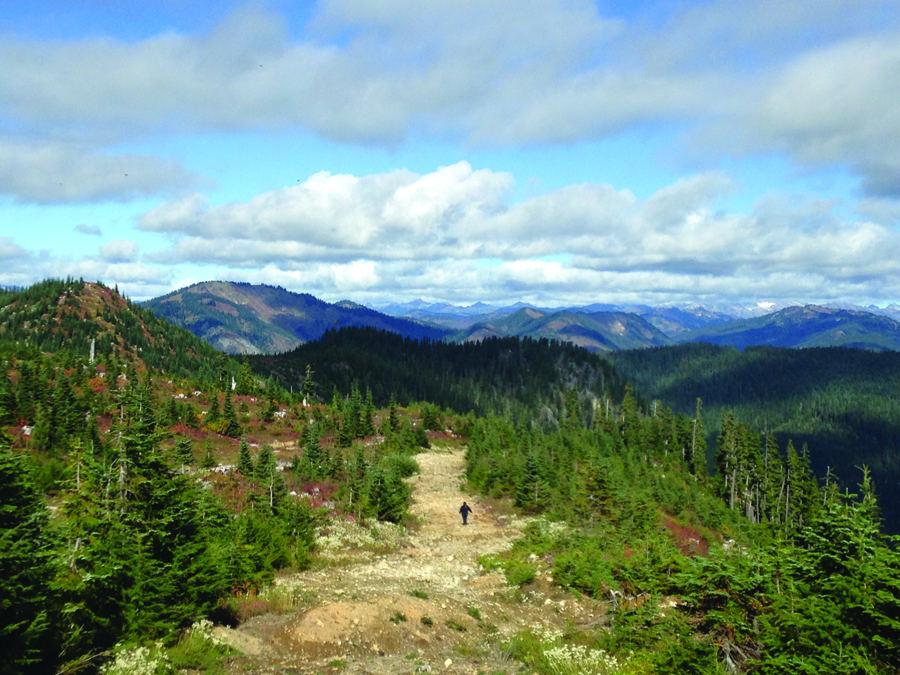Submitted by Lori Hartelius M.S. LMHC MHP, Tulalip Family Services
What’s wrong with throwing my medicines in the garbage or flushing them down the toilet?
About 30 percent of medicines are not used. Flushing waste medicines pollutes the environment. Medicines are now found in our surface and ground water, as well as drinking water supplies. Wastewater treatment facilities do not remove most medicines. Throwing medicines in the garbage – especially controlled substances like OxyContin and other pain relievers – is not safe because the drugs can be found and used by others. Medicines thrown in the trash can also get into the environment. Leaving them in your medicine cabinets at home can also be dangerous and get into the wrong hands. Taking any unused medication to a “take back” location is easier than ever. There are numerous locations all around the county including most Bartell Drug stores and local police stations.

Stillaguamish Tribal Police 22714 6th Ave. NE, Arlington WA 98223 Mon-Fri, 8am – 10pm Accepts controlled substances 360-654-0645
Arlington Police Station 110 E. Third St., Arlington WA 98223-1300 Mon-Fri 9am-4pmAccepts controlled substances 360-403-3400
Bothell Police Department 18410 101st Ave. NE, Bothell WA 98011 Mon-Fri, 7am-4pm Accepts controlled substances 425-388-3199
Bartell Drugs, Bothell – Canyon Park 22833 Bothell-Everett Hwy , 98021 No controlled substances 425-485-3525
Brier Police Station 2901 228th St. SW, Brier WA 98036 Monday-Friday, 8:30am-4:30pm Accepts controlled substances 425-388-3199
Darrington Police 1115 Seeman St., Darrington WA 98241 Monday-Friday, 9:30am-12pm and 1:30pm-5pm Accepts controlled substances 425-388-3199
Bartell Drugs, Edmonds Pharmacy 23028 100th Ave. W, Edmonds WA 98020 Mon-Fri 9am-9pm; Sat 9am-6pm; Sun 10am-6pm No controlled substances425-774-4916
Edmonds Police 250 Fifth Ave. N, Edmonds WA 98020 Monday-Friday, 9am-4pm Accepts controlled substances425-388-3199
Snohomish County Sheriff – Jail 3025 Oakes Ave., Everett WA 98201 Monday-Friday, 8am-10pm Accepts controlled substances 425-388-3199
Bartell Drugs, Everett – Silver Lake 11020 19th Ave , Everett WA 98208 No controlled substances 425-379-5390
Bartell Drugs, Everett – Broadway 1825 Broadway, Everett WA 98201 No controlled substances. 425-303-2583
Bartell Drugs, Everett – Seattle Hill Road 5006 132nd Street SE Bldg. A, Everett WA No controlled substances 425-357-6129
Everett Police – North Precinct 3002 Wetmore Ave., Everett WA 98201 Monday-Friday, 8am-6pm Accepts controlled substances 425-257-8400
Everett Police – South Precinct 1121 SE Everett Mall Way, Everett WA 98208 Monday-Thursday, 10am-5pm Accepts controlled substances 425-388-3199
Group Health Cooperative, Everett Medical Center Pharmacy 2930 Maple St., Everett WA 98201 – Mon-Fri 8:30am-9pm; Sat 9am-3:30pm; Sun 9am-12:30pm No controlled substances 425-261-1560 425-388-3199
NCIS – Naval Station Everett 2000 W Marine View Dr., Bldg. 2000, Rm 234, Everett WA 98201 Accepts controlled substances 425-388-3199
Snohomish County Sheriff – Courthouse 4th Floor Courthouse; 3000 Rockefeller Ave., Everett WA 98201 Mon-Fri, 9:30am-4:30pm Accepts controlled substances 425-388-3199
Gold Bar Police 107 Fifth St., Gold Bar WA 98251 Monday-Friday, 10am-12pm & 1pm-4pm Accepts controlled substances 425-388-3199
Granite Falls Police 205 S Granite Ave., Granite Falls WA 98252 Monday-Friday, 9am-12pm & 1pm-5pm Accepts controlled substances 425-388-3199
Pharm-A-Save 207 E Stanley St #A, Granite Falls WA 98252 Monday-Friday 9am-7pm, Saturday 9am-6pm No controlled substances 360-691-7778
Bartell Drugs Frontier Village Pharmacy 621 SR9 NE, Lake Stevens WA 98258 Mon-Fri 8am-9pm; Sat 9am-6pm; Sun 10am-6pm No controlled substances 425-334-8410
Lake Stevens Police 2211 Grade Rd., Lake Stevens WA 98258 Monday-Friday, 8am-5pm Accepts controlled substances 425-388-3199
Bartell Drugs Lynnwood Pharmacy 17633 Highway 99, Lynnwood WA 98037 Mon-Fri 9am-9pm; Sat. 9am-6pm; Sun 10am-6pm No controlled substances 425-743-1136
Lynnwood Police 19321 44th Ave. W, Lynnwood WA 98036 Monday-Sunday, 8am-5pm Accepts controlled substances 425-388-3199
Marysville Police 1635 Grove St., Marysville WA 98270 Monday-Friday, 8am-3pm Accepts controlled substances 425-388-3199
Snohomish County Sheriff– North Precinct 15100 40th Ave. NE, Marysville WA 98271 Monday-Friday, 9am-4pm Accepts controlled substances 425-388-3199
Washington State Patrol – Marysville 2700 116th St. NE, Marysville WA 98271 Monday-Friday, 9am-12pm & 1pm-5pm Accepts controlled substances 425-388-3199
Bartell Drugs, Marysville 6602 64th St NE , Marysville WA 98270 No controlled substances 360-658-6218
Mill Creek Police15728 Main St., Mill Creek WA 98012 Monday-Friday, 9am-5pm Accepts controlled substances 425-388-3199
Snohomish County Sheriff– South Precinct 15928 Mill Creek Boulevard, Mill Creek WA 98012 – Monday-Friday, 10am-4pm Accepts controlled substances 425-388-3199
Monroe Police 818 W Main St., Monroe WA 98272 Monday-Friday, 8am-5pm Accepts controlled substances 425-388-3199
Mountlake Terrace Police 5906 232nd St. SW, Mountlake Terrace WA 98043 Monday-Friday, 8am-4pm Accepts controlled substances 425-388-3199
Bartell Drugs, Mountlake Terrace 22803 44th Ave W, Mountlake Terrace WA 98043 No controlled substances 425-771-3835
Mukilteo Police 10500 47th Pl. W, Mukilteo WA 98275 Monday-Friday, 9am-4pm Accepts controlled substances 425-388-3199
Snohomish Police 230 Maple Ave., Snohomish WA 98290 Monday-Friday, 10am-3pm Accepts controlled substances 425-388-3199
Bartell Drugs, Snohomish 1115 13th St, Snohomish WA 98290 No controlled substances 360-568-4153
Stanwood Police 8727 271st St. NW, Stanwood WA 98292 – NOTE: Stanwood Police Department medicine take-back location is temporarily closed from December 10 through March 10,2015 Accepts controlled substances425-388-3199
Bartell Drugs, Stanwood 7205 267th St NW, Stanwood WA 98292 No controlled substances 360-939-2188
Sultan Police 515 Main St., Sultan WA 98294 Mon-Thurs, 10am-12pm and 1pm-4pm Accepts controlled substances425-388-3199












